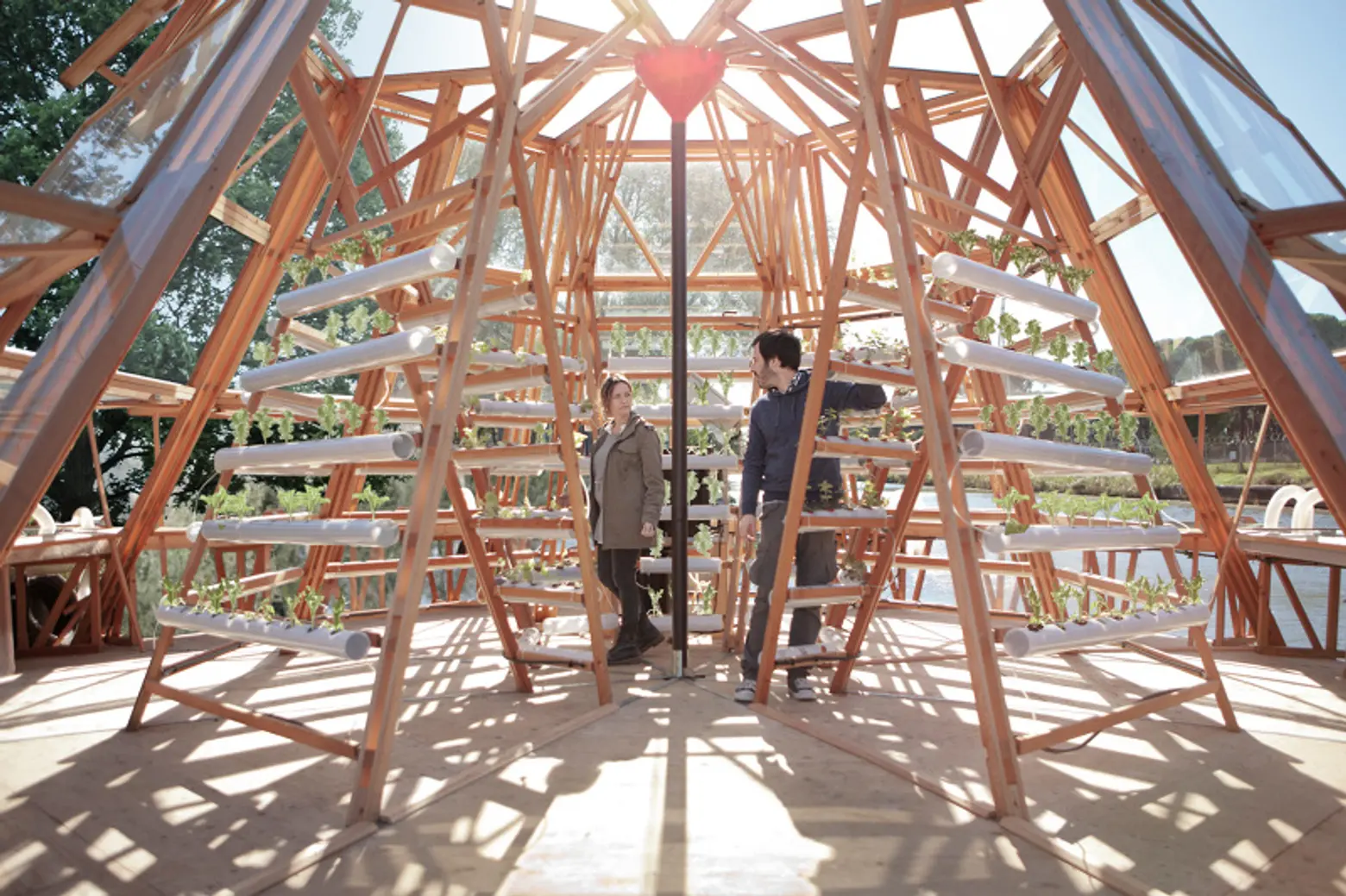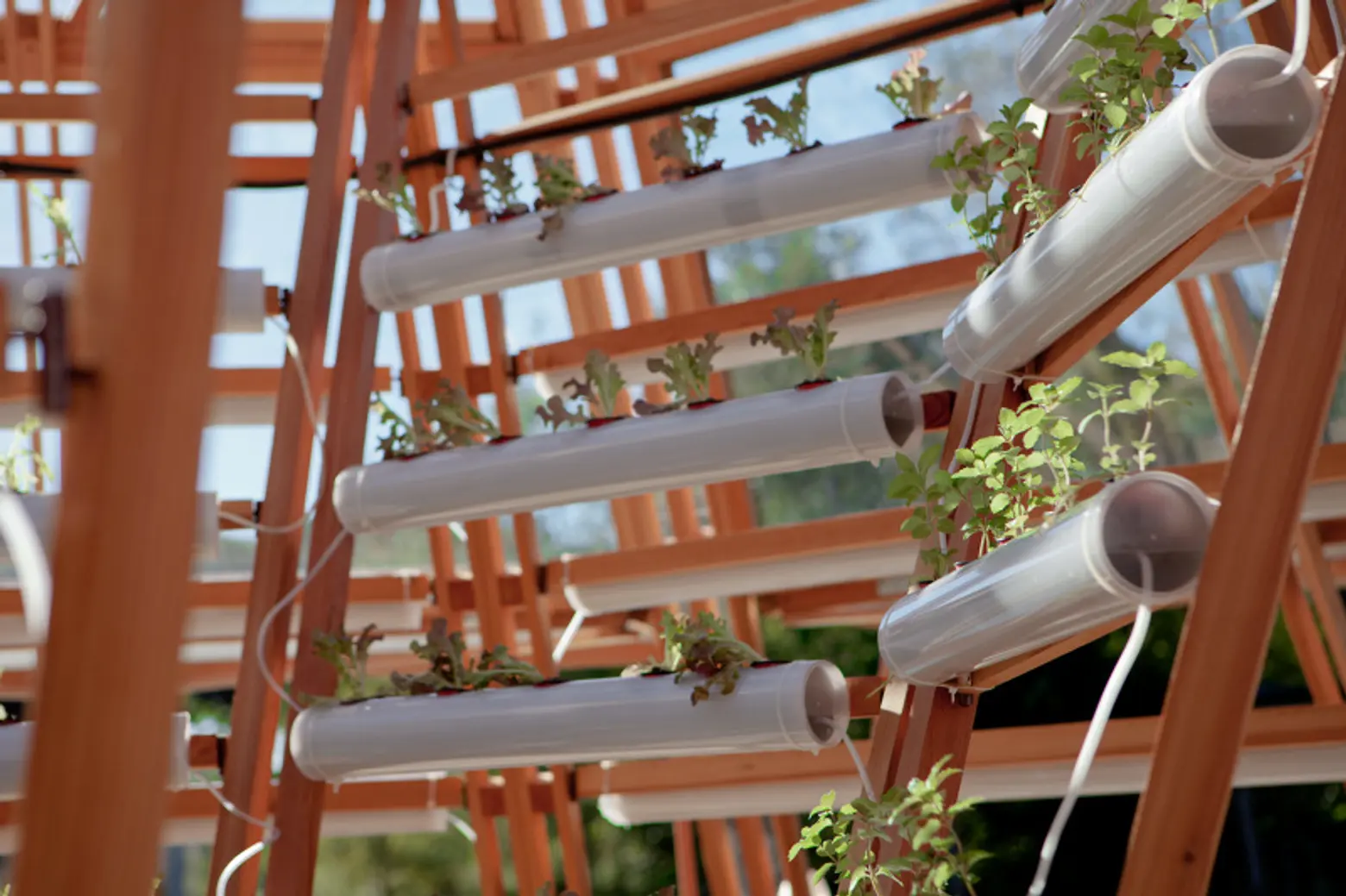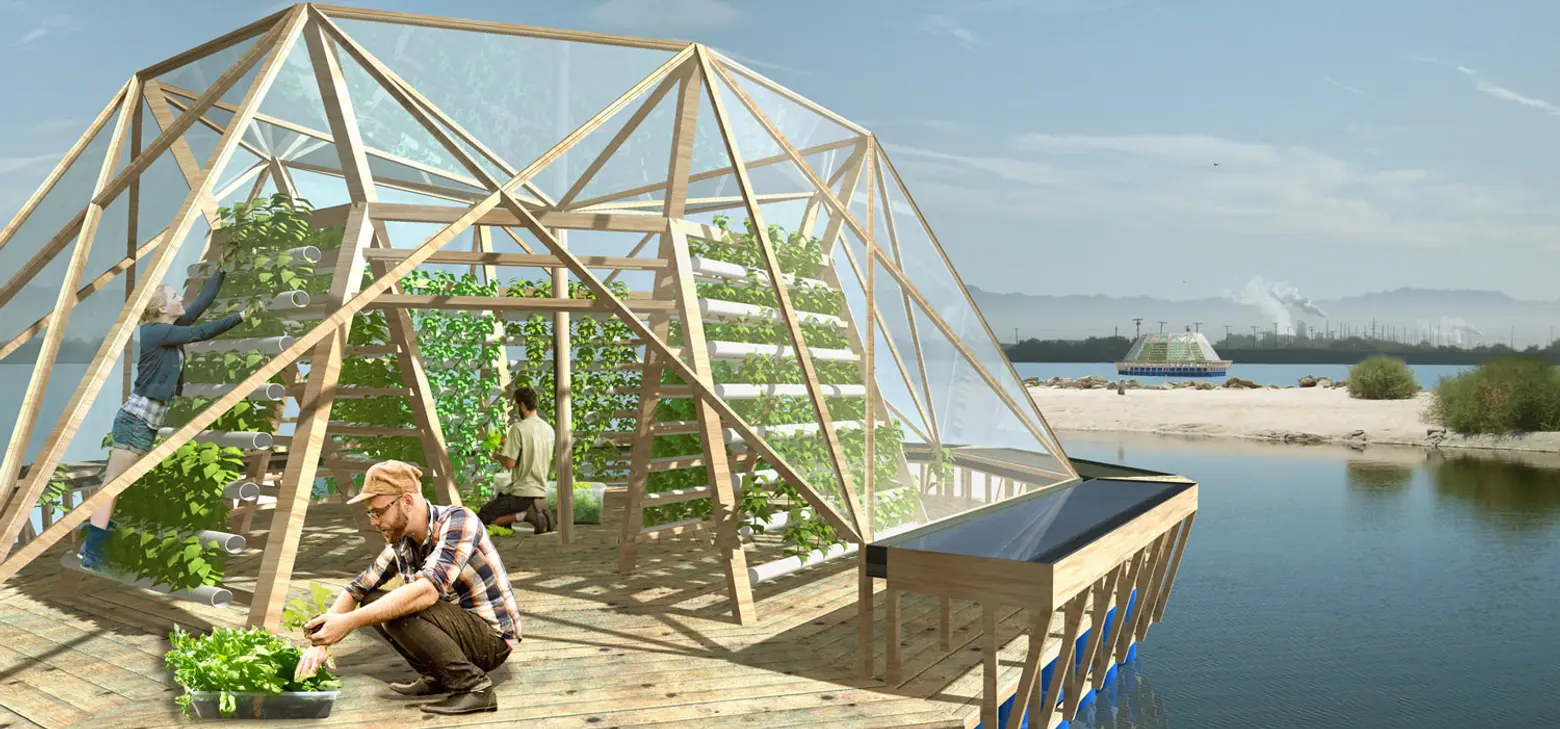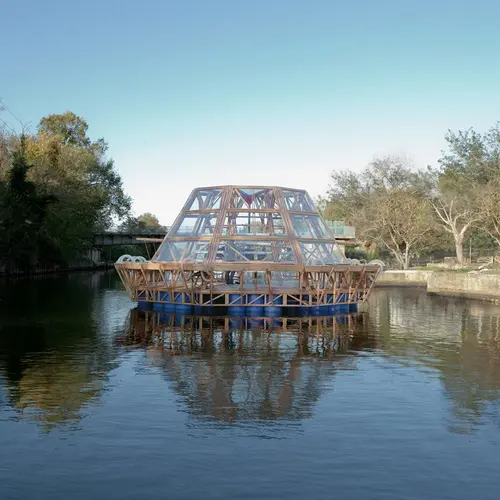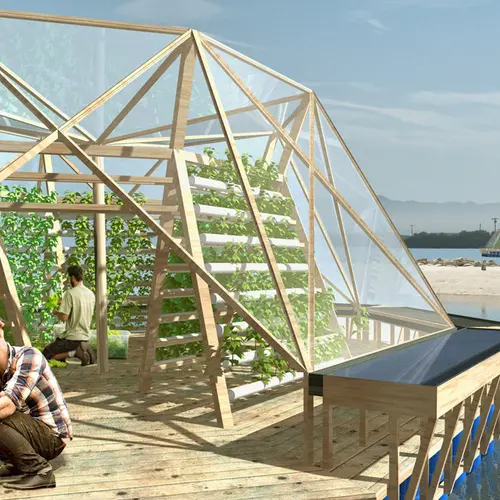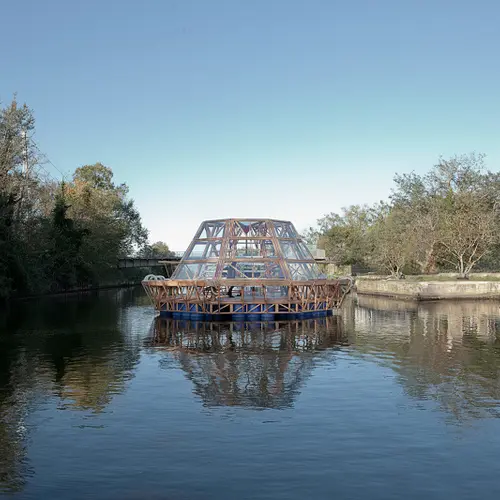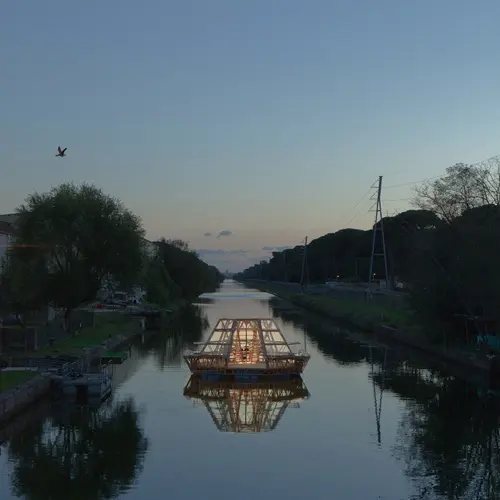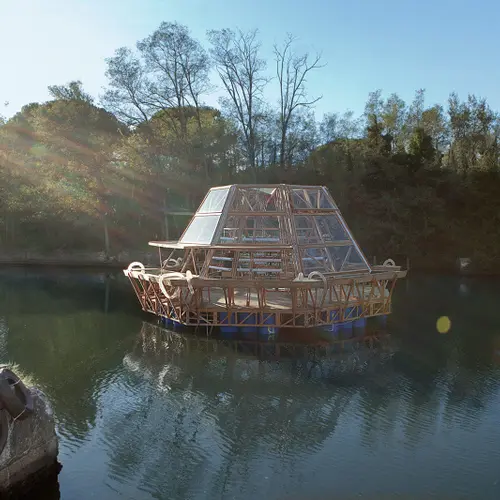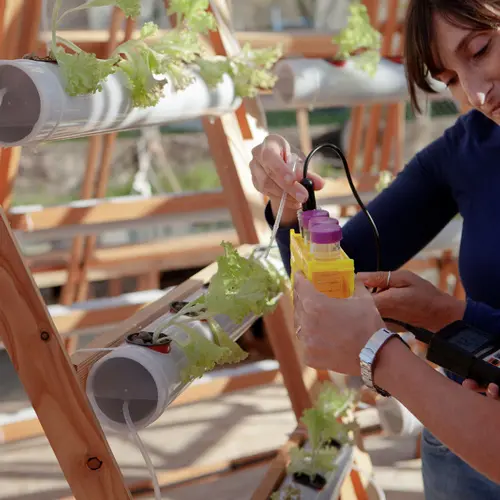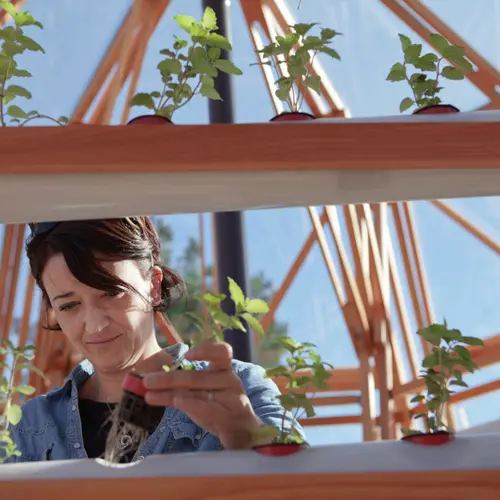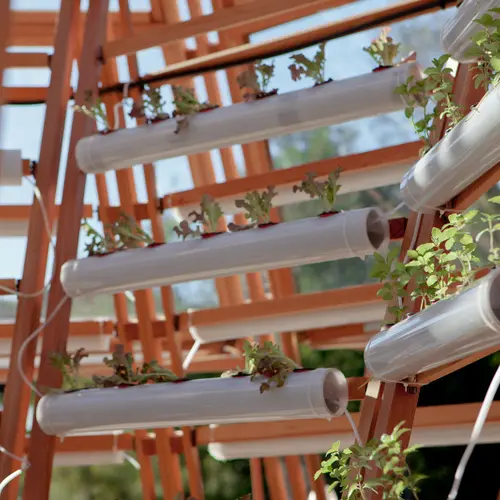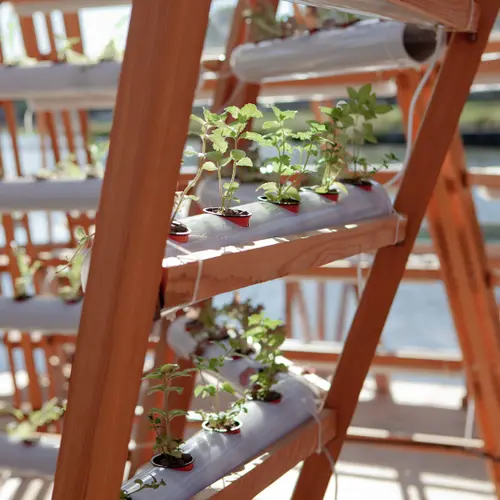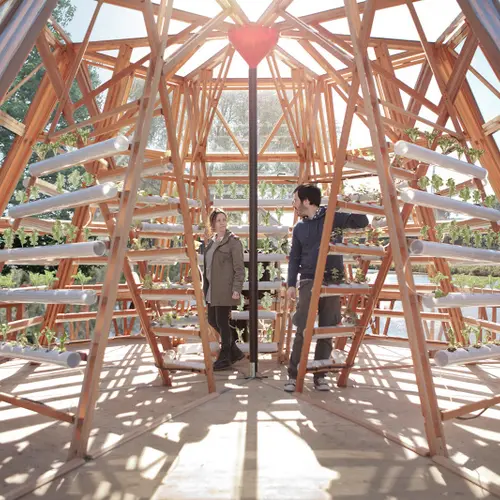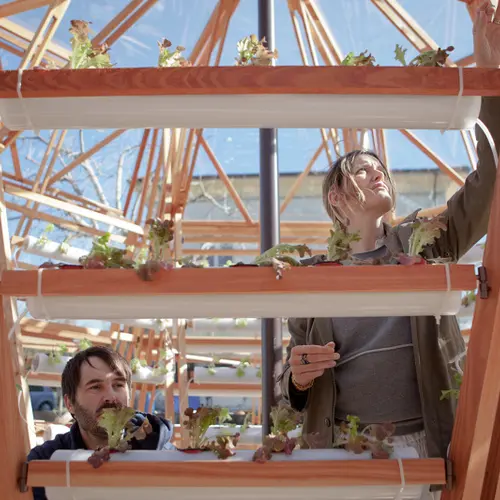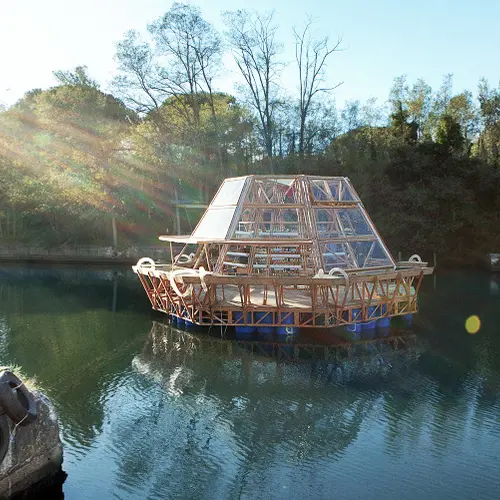Jellyfish Barge Floating Greenhouse Purifies Polluted Water While Growing Edibles
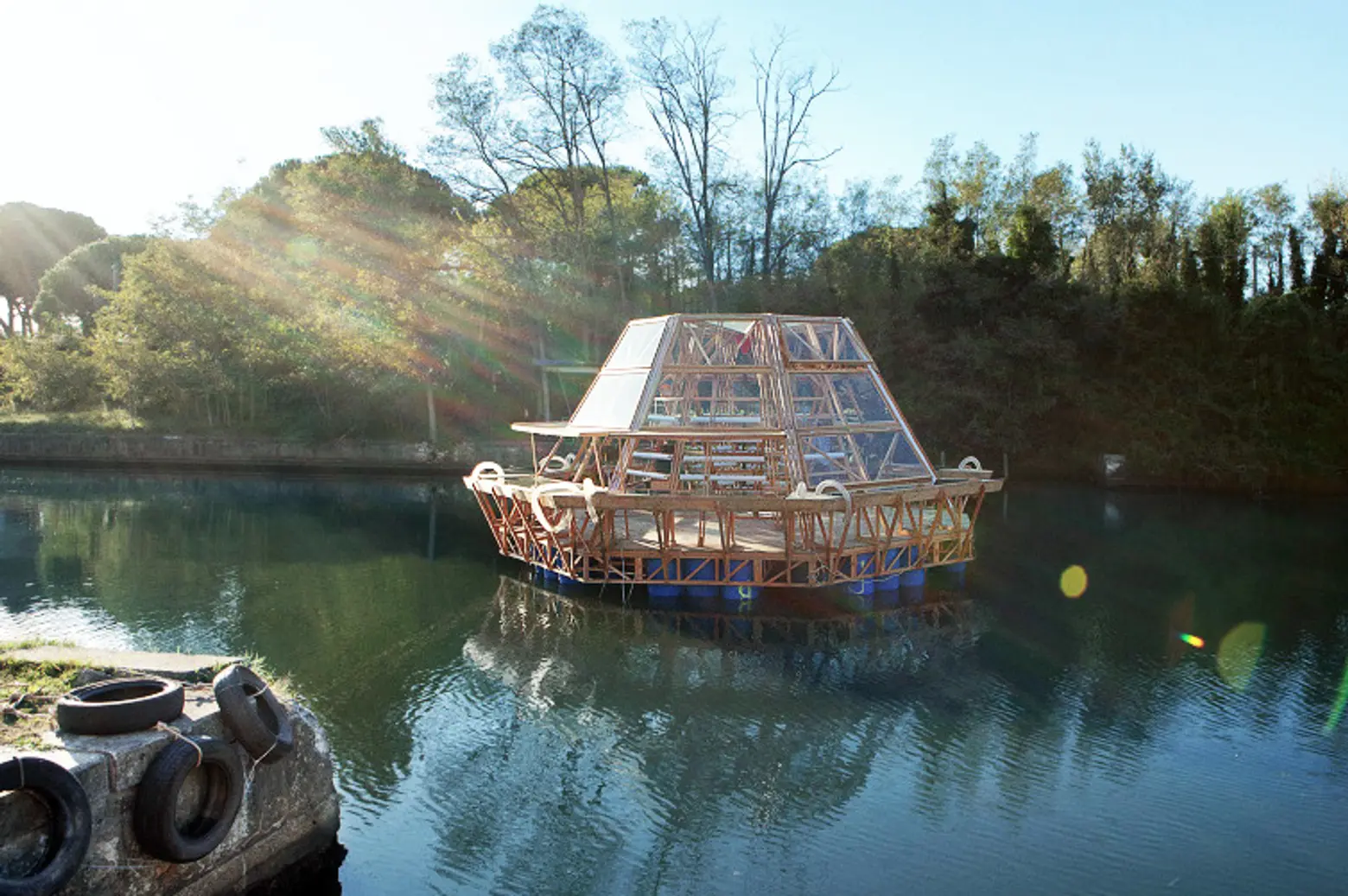
Influenced by the World Bank’s prediction that the world population will grow to almost 10 billion in the next four decades, and the fact that arable land is scarcest in many of the areas with the highest rates of population growth, the director of the International Laboratory of Plant Neurobiology and the architects at Studio Mobile have created the Jellyfish Barge, a floating greenhouse.
At only 229 square feet, the sustainably-made, octagonal Jellyfish Barge can purify salt, brackish, or polluted water using solar energy, thereby acting as a module for crop cultivation that doesn’t rely on soil, fresh water, and chemical energy consumption.
Jellyfish Barge is constructed with low-cost technologies and simple materials. Its wooden base floats on 96 blue recycled plastic drums and supports the glass greenhouse responsible for crop cultivation.
The greenhouse’s high-efficiency hydroponic cultivation method generates up to 70% in water savings. Necessary water comes from seven solar desalination units arranged around the perimeter that can produce up to 150 liters of clean water per day. They replicate the natural process of solar distillation when the sun’s energy evaporates water, which then turns into rainwater. In this smaller-scale version, most air is sucked in and forced to condense within the drums touching the cold sea water. The fans and pumps are powered by solar panels, mini wind turbines, and a system that uses waves to produce electricity.
Jellyfish Barge was designed small in size so that it can operate with limited resources, but it’s able to support two families. Flanked barges can be added to the structure to “create a stronger and more resilient organism.” And with New York thinking so much about floating parks, we think this greenhouse could definitely make some waves in the city.
[Via Fubiz]
Photos via Matteo de Mayda; Rendering via Pnat
